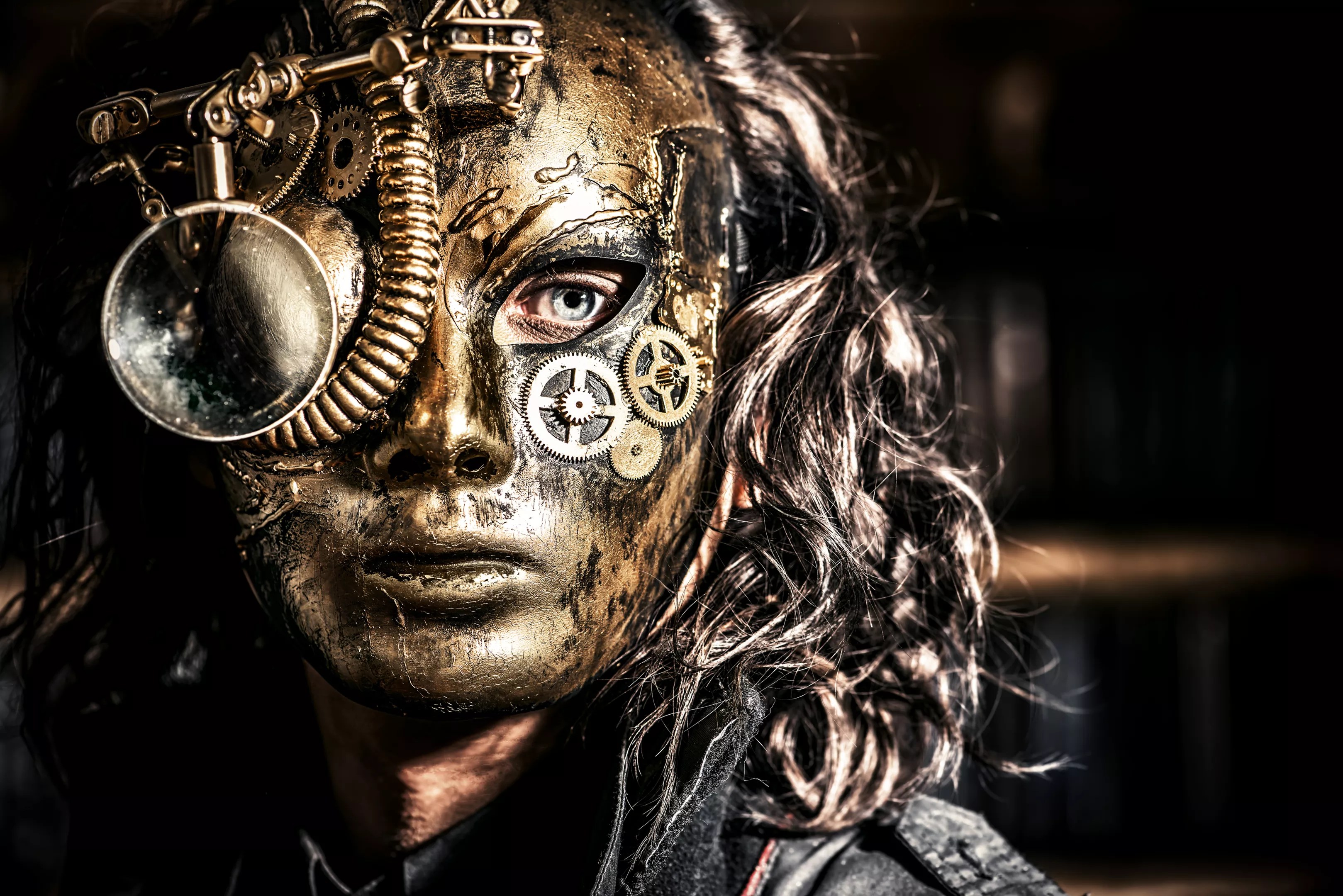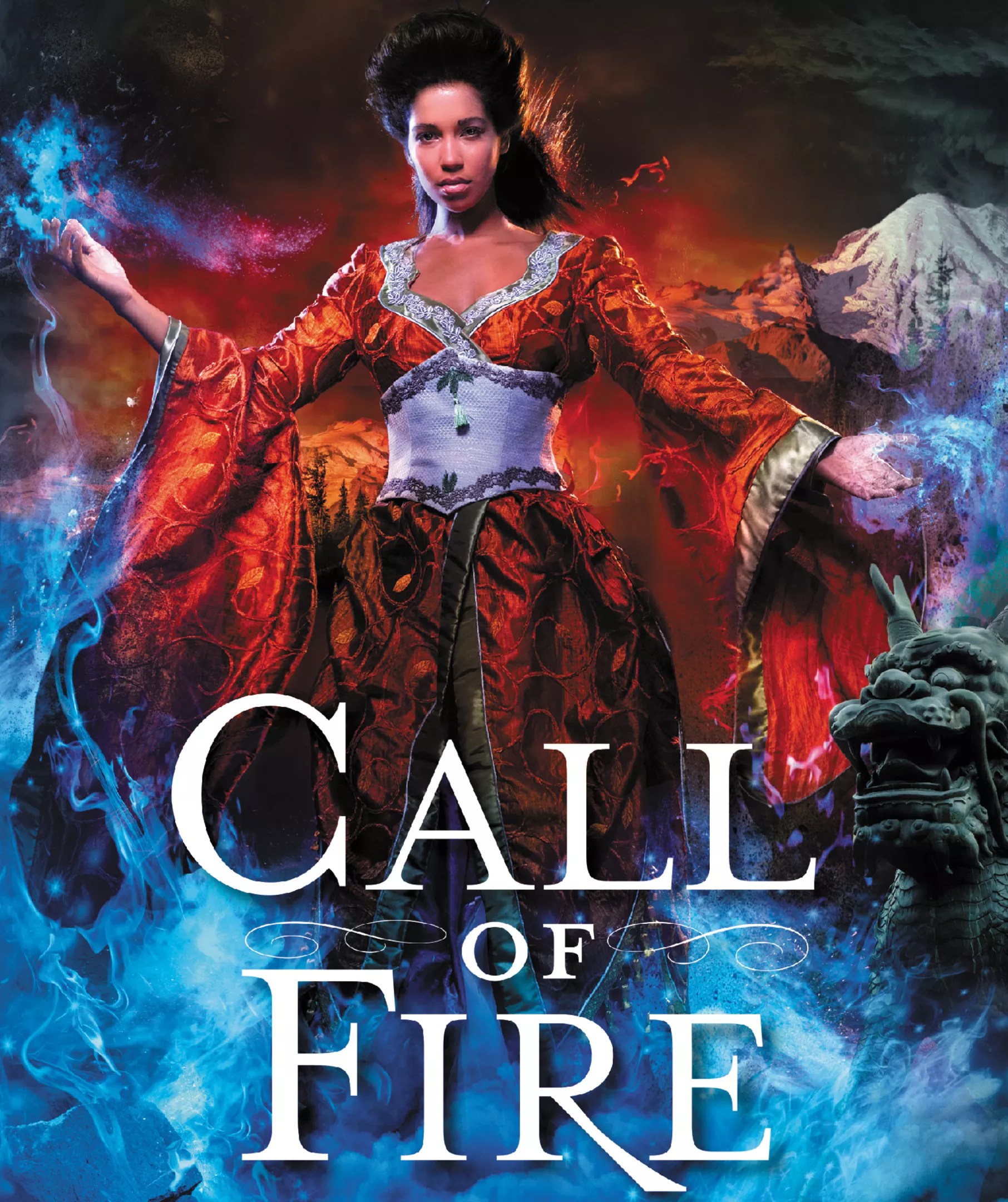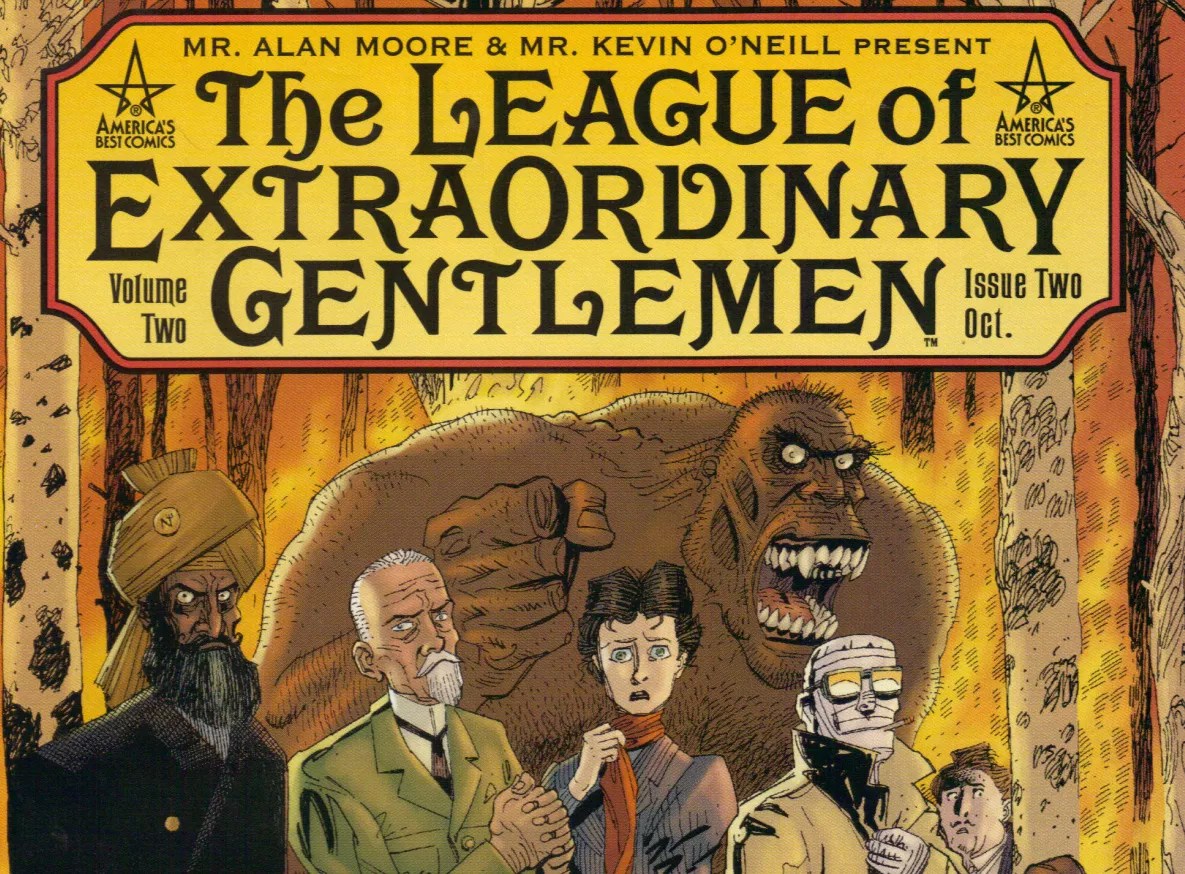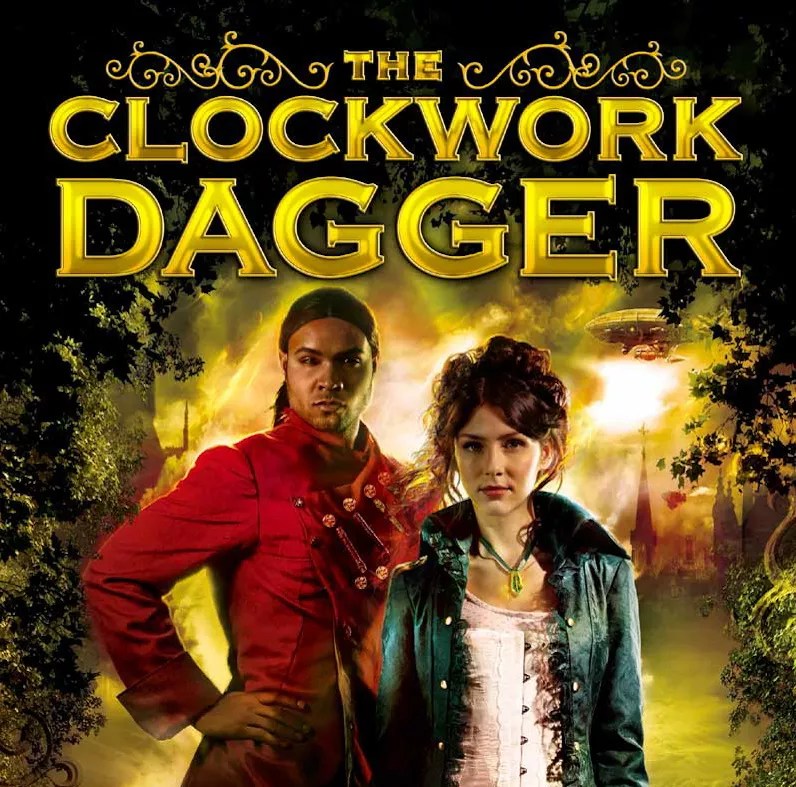
Kiselev Andrey Valerevich

Audio By Carbonatix
Blending 19th-century sensibility with anachronistic gadgetry, steampunk has become a stylistic sensation in the 21st century. Where else can you wear rave goggles and a gear-laden top hat?
And while steampunk has invaded comics, novels, movies, and even music in recent years, its roots go back much further.
The term was coined by Philip K. Dick’s disciple K.W. Jeter in the 1980s to describe his and his friends’ anachronistic sci-fi, like Jeter’s own Morlock Night and James Blaylock’s Homonculus. Even further back, the ’60s TV show Wild, Wild West (and its much-maligned Will Smith remake) are recognized as proto-steampunk and the 19th century sci-fi of Jules Verne and H.G. Wells are now included in the genre.
Part of the key to steampunk’s popularity is its mutability – steampunk can follow wild-west adventures fighting giant robotic spiders, or it can be set in Victorian London filled with vampires, werewolves, and steam-powered leviathans. Anime and manga have adapted the style in works like Steamboy, Fullmetal Alchemist, and Laputa: Castle in the Sky. Even futuristic sci-fi like Firefly and the surreal works of Terry Gilliam are influenced by steampunk’s style.
Canadian rockers Rush even dabbled in steampunk for their final concept album Clockwork Angels.

Beth Cato’s sequel to last year’s acclaimed “Breath of Earth,” “Call of Fire.”
Courtesy of HarperCollins.
Arizona aficionados are blessed with a popular steampunk convention, Wild West Con, which is held in March at Old Tuscon, as well as an author who is rapidly becoming one of the most respected in the genre.
In four years, Buckeye’s Beth Cato has risen from a nervous debut author to a multiple award-nominated leader in the genre. Her debut, The Clockwork Dagger, was described as “Murder on the Orient Express, on an airship,” and followed a young healer as she grew in power in a magical steampunk world. A sequel, The Clockwork Crown, and a handful of shorter works followed.
Her latest series is closer to home – 2016’s Breath of Earth is an alternate history set in early 20th-century San Francisco. It follows Ingrid Carmichael, a powerful geomancer who can harness the power of earthquakes, in the aftermath of the city-leveling quake of 1906. In it’s sequel, Call of Fire, which hit stores on August 15, Ingrid and her friends, who all harbor secrets of their own, must travel north in search of Theodore Roosevelt, a powerful magician, in hopes of stopping a war between Japan, America and China.
So in honor of Cato, who’s signing copies of Call of Fire at 2 p.m. on Saturday, August 26, at the Barnes & Noble Desert Ridge, here is an introduction to steampunk in its many iterations – enough to give you a taste of the style without having to drop a small fortune on bustles, goggles, and tea-cup fascinators.
The Anubis Gates
By Tim Powers (1983)
Another of K.W. Jeter’s cabal, Powers has become a preeminent voice in sci-fi and fantasy, thanks to masterpieces like On Stranger Tides and Last Call. His early work formed the basis of the steampunk genre, however. This 1983 novel, a whirlwind of paradoxes involving time travel, werewolves and resurrected Egyptian gods won the Philip K. Dick Award upon publication.
The Difference Engine
By Bruce Sterling and William Gibson (1990)
Gibson had already invented the cyberpunk genre with Neuromancer when he created the definitive introduction to steampunk with Sterling. When Charles Babbage invents the Difference Enging, a proto-punch-card computer, in 1824. This changes the course of human history, with Britain becoming a dominant world power thanks to its steam-powered airships and advanced technology. Like other early steampunk novels from Jeter and Powers, The Difference Engine owes a lot to the style of Philip K. Dick and the cyberpunk movement, but it also establishes many of the tropes that mark modern steampunk.
Anno Dracula (1992)
By Kim Newman
This novel begins with the premise, what if Dracula survived Van Helsing’s attack. Historical and literary figures intermingle in this alternate history with Dracula wedded to Queen Victoria, while a vampiric Jack the Ripper preys on the prostitutes of Whitechapel. It doesn’t contain much in the way of airships or anachronistic technology, but Anno Dracula’s deconstruction of 19th century penny dreadfuls influenced numerous steampunk
works to come.

Alan Moore and Kevin O’Neill’s steampunk comicThe League of Extraordinary Gentlemen.
Courtesy of DC Comics.
The League of Extraordinary Gentlemen (1999)
By Alan Moore and Kevin O’Neill
First, forget the movie that led to Sean Connery’s retirement. Instead seek out Alan Moore’s magnificent comic, which features a team of superhuman characters from 19th century pulp novels, including Dracula’s Mina Murray, Dr. Jeckyll and Mr. Hyde, Allan Quatermain, and the Invisible Man, working for the British government to stop the evil Fu Manchu. Moore combines Anno Dracula’s deconstruction with the worldbuilding tropes that Gibson and Sterling established, creating an almost definitive steampunk vision.
Steampunk (2008)
Edited by Ann and Jeff Vandermeer
For the definitive look at steampunk through short fiction, the husband-and-wife team of Ann and Jeff Vandermeer assembled an exhaustive over of the genre. This tome features works from pioneers like Michael Moorcock and James Blaylock, as well as award-winning writers like Michael Chabon, Neal Stephenson, and Ted Chiang.
Boneshaker (2009)
By Cherie Priest
Set during the Civil War, Priest’s acclaimed Boneshaker follows prospectors in the Pacific Northwest seeking to find gold to fund the war. Inventor Leviticus Blue hopes to have the edge with his “boneshaker drill,” unfortunately he accidentally releases a gas on Seattle, transforming the city into zombies. The novel, intended by Priest to be the magnum opus of steampunk, won the 2010 Locus award and kicked off Priest’s “Clockwork Century” series.
“The Parasol Protectorate” (2009)
By Gail Carriger
Carriger taps into the comedy of manners tradition for this hilarious series, which features nobel werewolves and vampires in a steam-powered British Empire. The series kicks off with Soulless, about Alexia Tarabotti, a human born without a soul. This gives her the power to revert supernatural beings to human form. She has assorted comic adventures throughout the series as she protects the Empire and Queen Victoria with her trusty parasol. A sequel series, “The Custard Protocol” features Alexia’s daughter Prudence and her adventures in her dirigible, “The Spotted Custard.” Carriger has also written a YA prequel series, “Finishing School.”

Beth Cato’s Locus Award-nominated debut The Clockwork Dagger.
Courtesy of HarperCollins
The Clockwork Dagger (2014)
By Beth Cato
Cato drew inspiration from her beloved video games when she created this steampunk universe. The novel follows Octavia, a gifted magical healer in service of The Lady, as she is sent via airship to minister to the victims of a long-running war. She becomes afoul of a political plot after a murder and attempt on her life while she is journeying by airship to her new post. A mysterious government operative, global conspiracies and silver-eating gremlins helped propel this debut to a Locus award-nomination and established Cato as a new voice in the steampunk genre.
The Aeronaut’s Windlass (2015)
By Jim Butcher
Jim Butcher had already made a name as an urban fantasist with his Dresden Files series before switching gears to Steampunk. For his “Cinder Spires” series, he takes to the skies, in a fantastical world where humans live in spires, gigantic arcologies among the clouds, to avoid the horrific magical creatures on the surface, while airships battle for atmospheric dominance between the rival spires.
Everfair (2016)
By Nisi Shawl
Until Everfair, steampunk was mostly Anglo and American centric. But Shawl, an African-American fantasy author and writing coach, set her debut novel in the Belgian Congo. Everfair presents an alternate history where the native Congolese develop steam technology and use it to overthrow their Belgian invaders to create an African utopia. The acclaimed novel was nominated for a Nebula Award earlier this year.